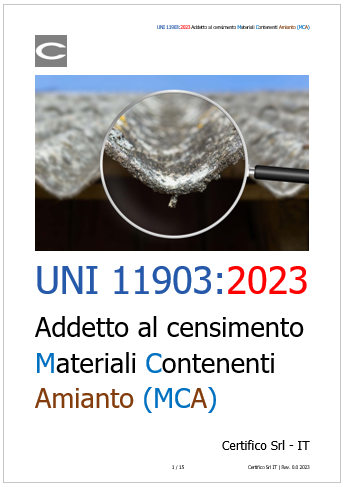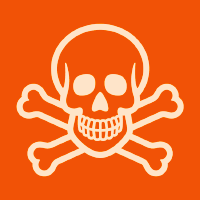Occupatonal cancer NIOSH
Around the world, 12.7 million people are diagnosed with cancer every year, and the number is expected to increase due to the growth and aging of the population, as well as reductions in childhood mortality and deaths from infectious diseases in developing countries(1). Cancer is the leading cause of death in developed countries and the second leading cause of death in developing countries.
Cancer is a group of different diseases that have the same feature, the uncontrolled growth and spread of abnormal cells. Each different type of cancer may have its own set of causes. Many factors play a role in the development of cancer. The importance of these factors varies depending on the type of cancer. A person's risk of developing a particular cancer is influenced by a combination of factors that interact in ways that are not fully understood. Some of the factors include:
- Personal characteristics such as age, sex, and race
- Family history of cancer
- Diet and personal habits such as cigarette smoking and alcohol consumption
- The presence of certain medical conditions or past medical treatments, including chemotherapy, radiation treatment, or some immune-system suppressing drugs.
- Exposure to cancer-causing agents in the environment (for example, sunlight, radon gas, air pollution, and infectious agents)
- Exposure to cancer-causing agents in the workplace
Millions of U.S. workers are exposed to substances that have been tested as carcinogens in animal studies or found to be possibly carcinogenic in human studies. However, less than 2% of chemical or physical agents manufactured or processed in the U.S. have been evaluated by the International Agency for Research on Cancer for carcinogenicity(2). Based on well-documented associations between occupational exposures and cancer, it has been estimated that 3-6% of all cancers worldwide are caused by exposures to carcinogens in the workplace (3,4). Using cancer incidence numbers in the U.S. (5), this means that in 2012 (the most recent year available), there were between 45,872 and 91,745 new cancer cases that were caused by past exposure in the workplace. This is probably an underestimate, partly because we continue to discover new information about agents in the workplace that may cause cancer. Also, these estimates may change over time as the number of cancers increase or decrease in the U.S. Cancers that occur as a result of exposures in the workplace are preventable, if exposures to known or suspected carcinogens can be reduced(6-8).
Cancer Clusters
Cancer Cluster Scenario
Carcinogenic Agents
NIOSH Carcinogen List
International Agency for Research on Cancer (IARC)
National Toxicology Program Report on Carcinogens
NIOSH Pocket Guide
Diesel Exhaust in Miners Study (DEMS)
Recent NIOSH Research on Cancer Risk Factors
Regulation and Policy
OSHA Standards
Surveillance
NIOSH Data & Statistics by Industry Sector - Cancer
Click on one of the eight Sector Tabs at the top of the screen to find available cancer statistics for that Sector
Work-Related Lung Disease Surveillance System
The Work-Related Lung Disease (WoRLD) Surveillance System, produced by the National Institute for Occupational Safety and Health (NIOSH), presents up-to-date summary tables, graphs, and figures of occupationally-related respiratory disease surveillance data on respiratory conditions including cancers, the pneumoconioses, and occupational asthma and other airways diseases. For many of these diseases, selected data on related exposures are also presented.
Training to Improve the Industry and Occupation Information in Cancer Registries
NIOSH developed a training module to improve both the quality and the quantity of industry and occupation information captured from hospital and clinic records in order to increase the value of using this information for public health surveillance and research with the ultimate goal of decreasing the incidence of cancers related to workplace exposures.
References
1. American Cancer Society (ACS). 2011. American Cancer Society. Global Cancer Facts & Figures 2nd Edition. Atlanta: American Cancer Society; 57 pp.
2. Straif K [2008]. The burden of occupational cancer. Occupational and Environmental Medicine. 65(12):787-788.
3. Driscoll T, Takala J, Steenland K, Corvalan C, Fingerhut M. 2005. Review of estimates of the global burden of injury and illness due to occupational exposures. Am J Ind Med 48:491-502.
4. Rushton L, Hutchings SJ, Fortunato L, et al. 2012. Occupational cancer burden in Great Britain. Br J Cancer. 107(Suppl 1):S3-7.
5. Centers for Disease Control and Prevention. U.S. Cancer Incidence Statistics: an Interactive Atlas. https://nccd.cdc.gov/DCPC_INCA/. Accessed October 29, 2015.
6. Boffetta P [2004]. Epidemiology of environmental and occupational cancer. Oncogene. 23:6392-6403.
7. Landrigan PJ [1996]. The prevention of occupational cancer. CA Cancer J Clin. 46:67-69.
8. Siemiatycki J, Richardson L, Straif K, et al [2004]. Listing occupational carcinogens. Environ Health Perspect. 112(15):1447-1459.

































